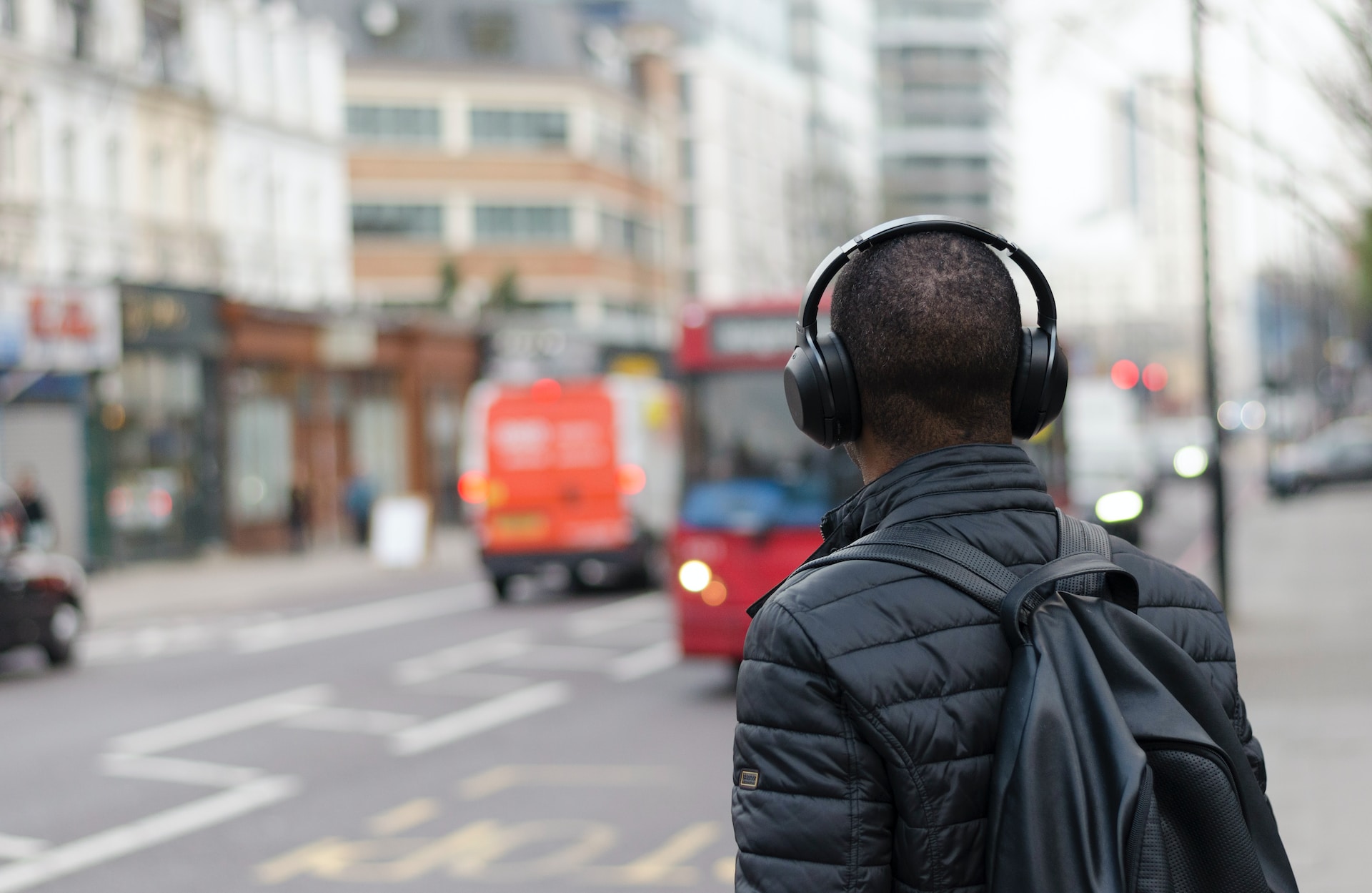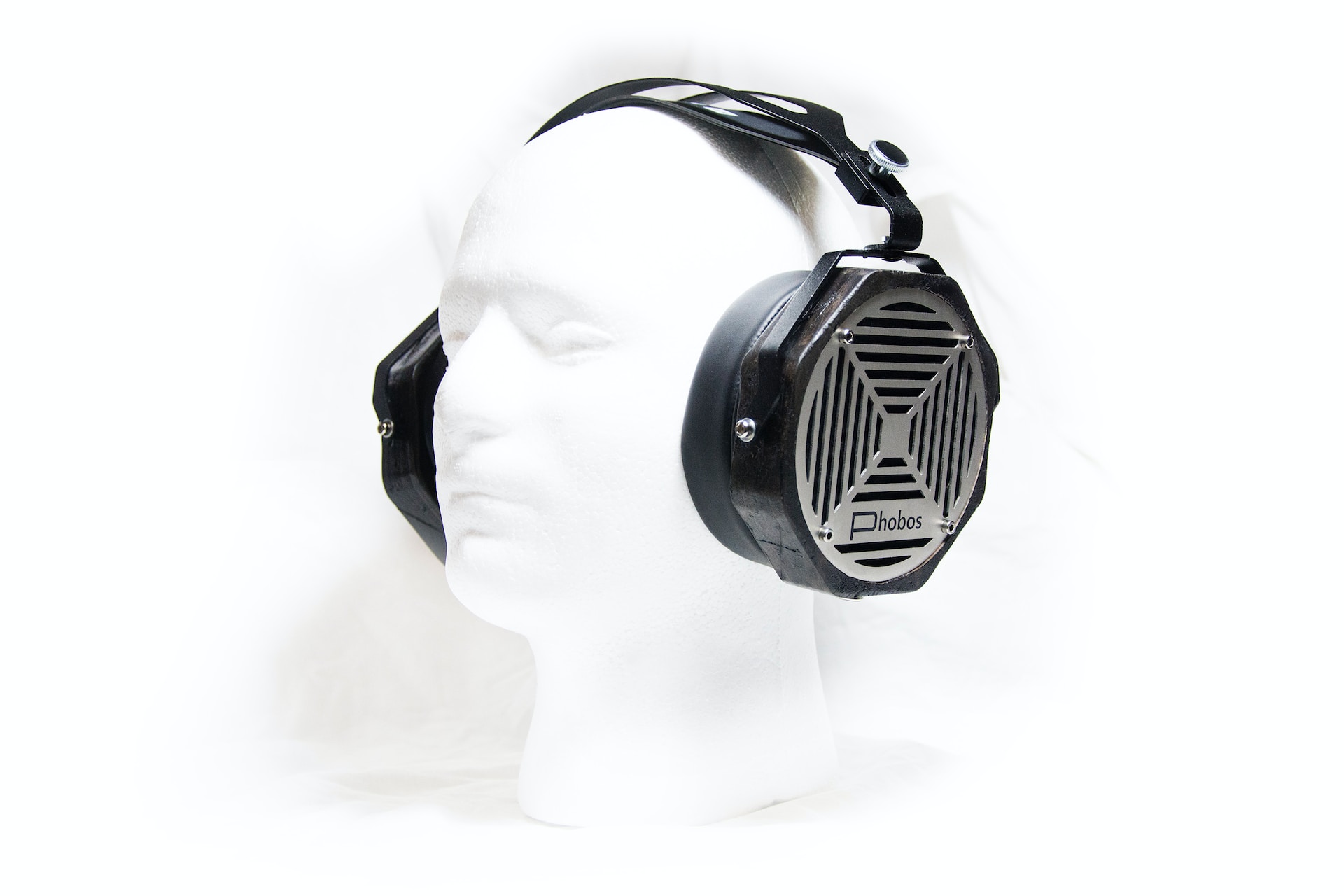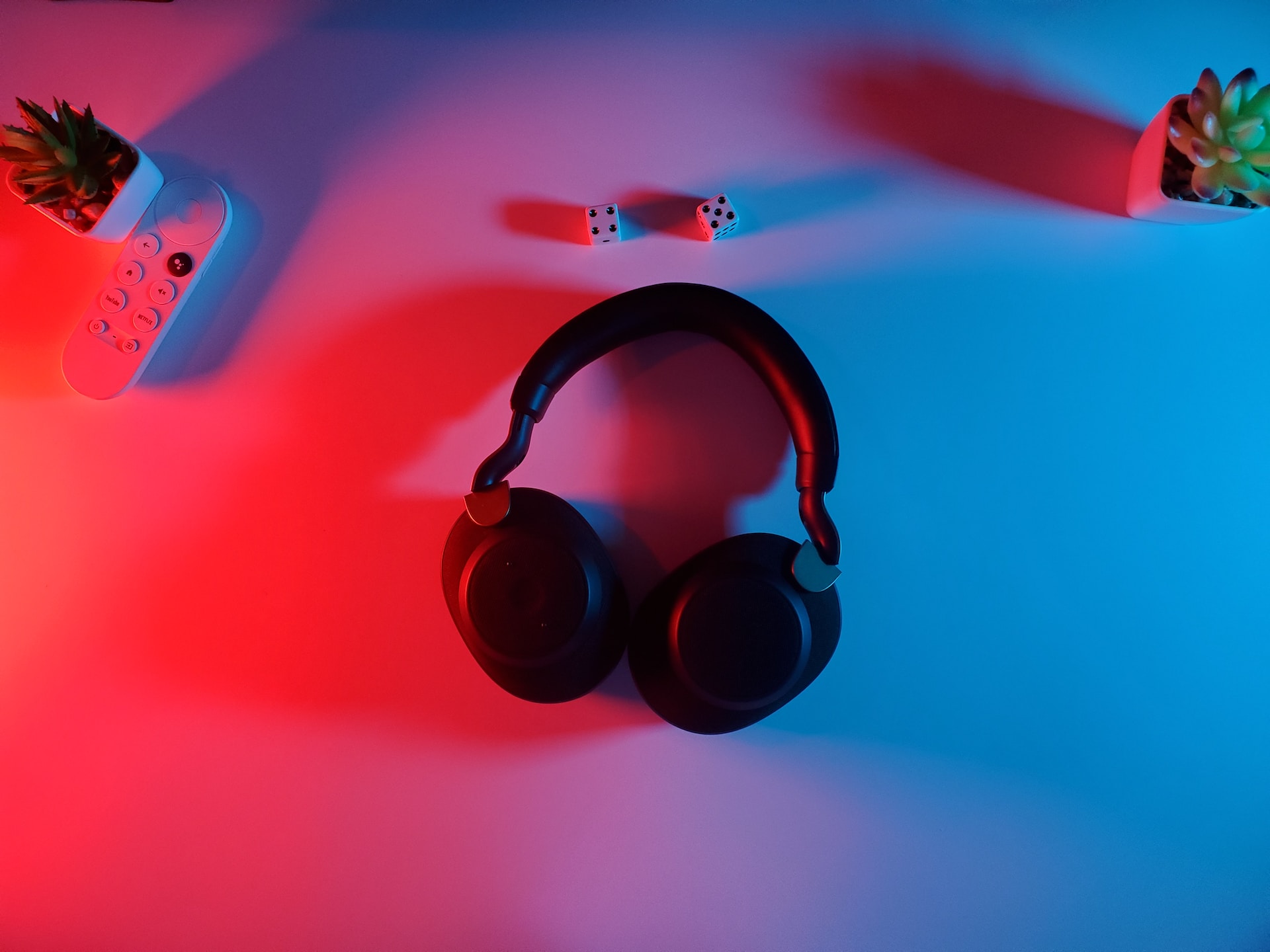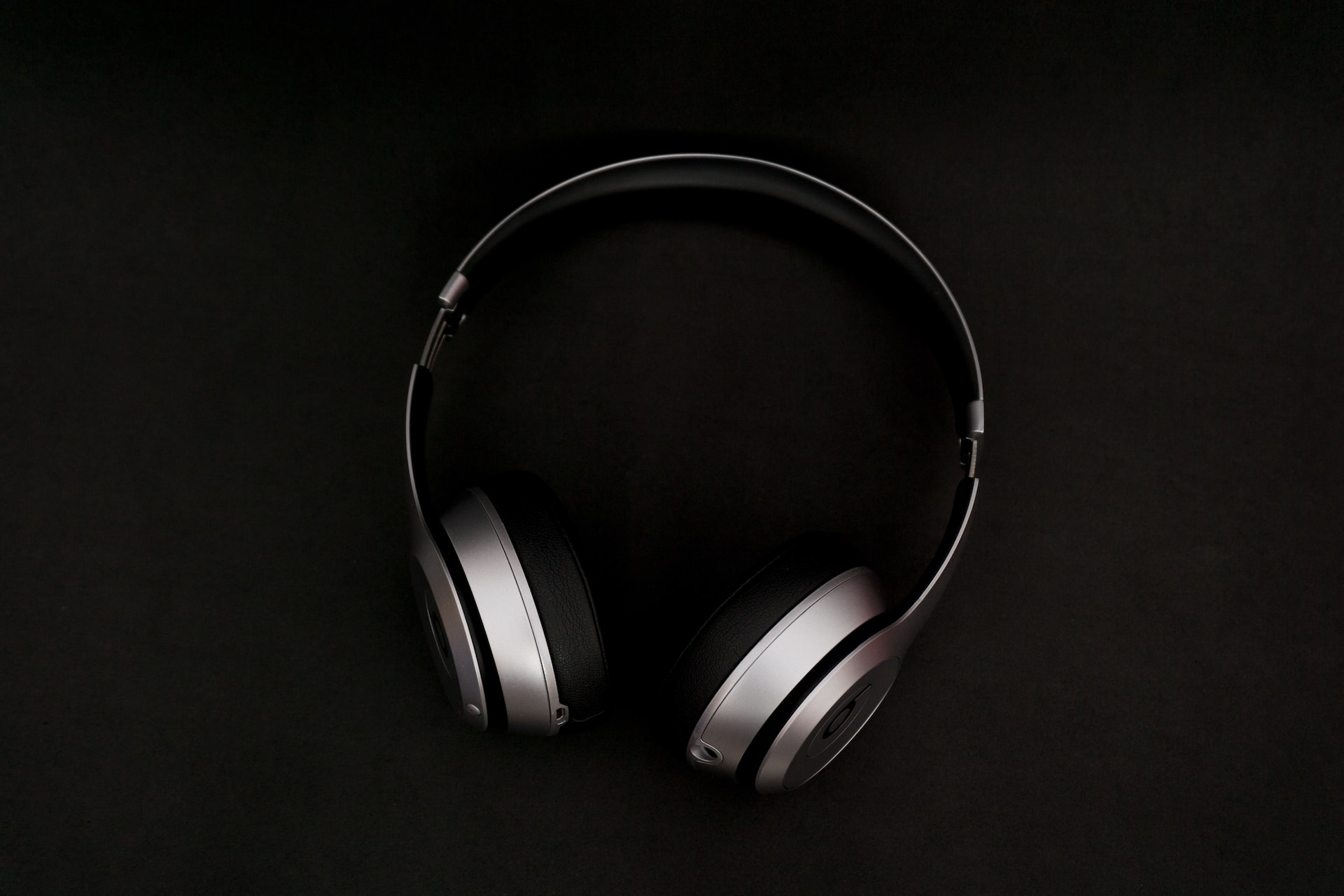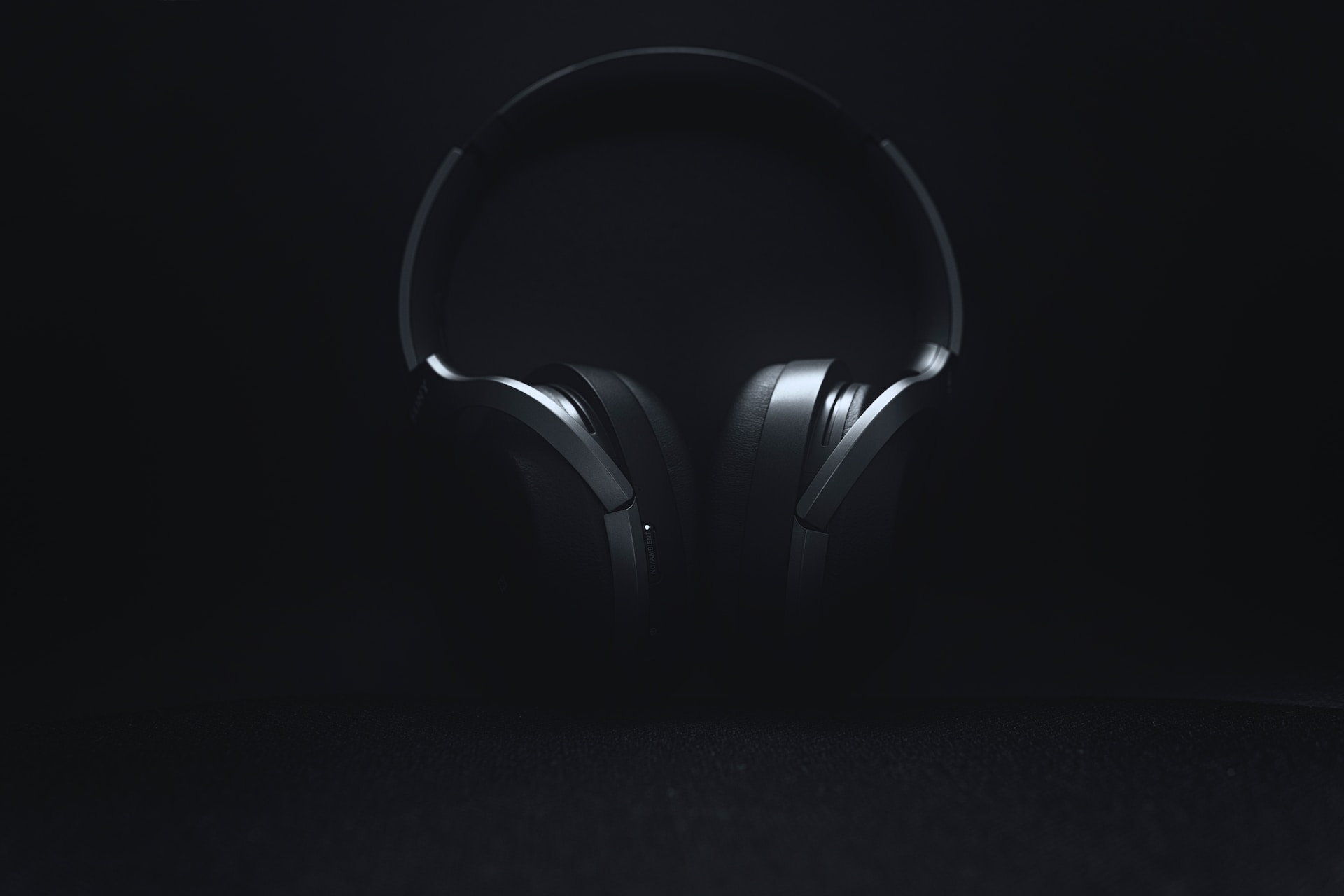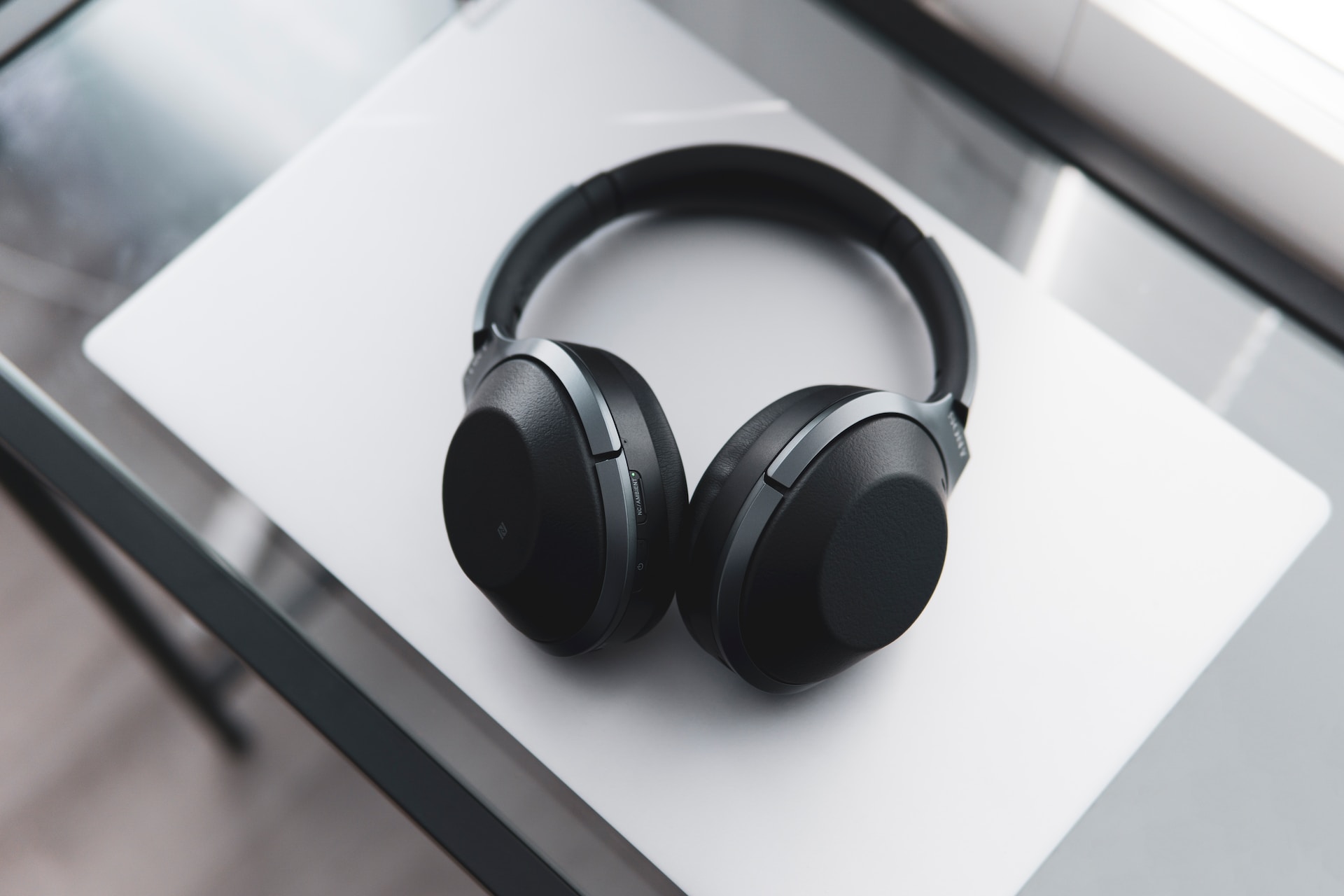Headphones are one of the most popular and versatile devices for listening to music, podcasts, audiobooks, and more. Whether you use them at home, at work, or on the go, you want them to be comfortable, durable, and easy to use. But how do you know which headphones are the best for your needs? How do you compare different models and brands based on their design and performance?
These are a set of criteria and measurements that help you evaluate the quality and suitability of headphones for different purposes and preferences. They cover aspects such as comfort, breathability, controls, portability, build quality, and stability. By looking at these factors, you can get a better idea of how headphones will fit, feel, and function in real-life scenarios.
One of the most important factors to consider when choosing headphones is comfort. Comfort relates to how pleasant and enjoyable headphones are to wear over an extended period of time. Comfortable headphones shouldn’t cause stress, fatigue, or pain, even after prolonged periods of use. Comfort is subjective and tends to vary between individuals; however, there are certain design elements that most people tend to keep an eye out for. Weight, padding, headband tension, and frame tightness tend to influence how comfortable over-ear or on-ear headphones are, especially over long listening sessions. For earbuds and in-ears, how soft and flexible the earbuds are, how deep they protrude into the ear canal, and how much pressure they exert on the ear generally impact comfort as well.
That’s why we have developed our own comfort score and tests for headphones. These are a mixture of objective measurements and subjective tests that help us assess how the headphones feel while in use. We measure weight and clamping force objectively to give us data on how heavy and tight they are and then test the headphones on various people with different characteristics to estimate how pleasant the headphones might be to wear for a while. The sum of these experiences is taken into consideration and a comfort score is subjectively determined.
In this article, we will explain how we test comfort and other design aspects of headphones. We will also share our top picks for the best headphones for comfort and design based on our extensive testing and research. Whether you’re looking for over-ear, on-ear, earbuds, or in-ear headphones, we have something for everyone. Read on to find out more!
How We Test Comfort
Comfort is one of the most important factors when it comes to headphones. No matter how good they sound or how many features they have, if they’re uncomfortable to wear, you won’t enjoy them as much. Comfort affects your listening experience by influencing how immersed you feel in your audio and how long you can wear them without feeling any discomfort.
Comfort is also subjective and depends on personal preferences and physical characteristics. Some people may prefer a snug fit that blocks out external noise, while others may like a looser fit that lets in some ambient sound. Ear size can also affect how well the headphones fit and feel, as some people may have larger or smaller ears than average. Sensitivity to pressure or heat can also affect how comfortable certain materials or designs are for different individuals.
That’s why we test comfort using a combination of objective measurements and subjective tests. We measure the weight and clamping force of the headphones using specialized equipment to give us an idea of how heavy and tight they are. Then we test them on different people with different head sizes, ear shapes, hairstyles, glasses, etc., to see how they fit and feel on different ears. We also ask them to rate the comfort level of the headphones on a scale from 1 to 10 after wearing them for an hour.
We take into account four aspects of comfort: adjustability, pressure, stiffness, and weight.
Adjustability
Adjustability refers to how well the headphones can adapt to different head sizes and shapes. It also includes the degrees of freedom that the headphones offer in terms of rotation or tilt. Adjustability is important because it affects how well the headphones fit on your head
and how evenly they distribute the weight and pressure on your ears. Adjustable headphones allow you to find the best fit for your head shape and size, which can improve comfort and stability.
Adjustability refers to the headphones’ versatility and flexibility in terms of fitting different head sizes and shapes. It is measured by the degrees of freedom that the headphones provide, such as rotation or tilt of the ear cups, and extension or retraction of the headband. We also check if the ear cups can swivel in or out, which can affect how easy it is to store or carry the headphones. Our adjustability rating ranges from 1 to 10, with higher scores indicating more adjustable and flexible headphones.
Pressure
Pressure refers to how much force the headphones apply on your head and ears. It is mainly determined by the clamping force of the headband, which is how tightly it holds the headphones in place. Pressure is important because it affects how secure and comfortable the headphones feel on your head. Too much pressure can cause pain, fatigue, or headaches, while too little pressure can make the headphones feel loose or unstable.
To test pressure, we measure the clamping force of the headphones using a specialized device that simulates a human head. We also test them on different people with different head sizes and shapes to see how they perceive the pressure level of the headphones. Pressure is rated on a scale from 1 to 10 based on how well-balanced and comfortable it is.
Stiffness
Stiffness refers to how rigid or flexible the materials and components of the headphones are. It includes the headband, ear cups, ear pads, hinges, joints, etc. Stiffness is important because it affects how durable and adaptable the headphones are. Stiff headphones may be more resistant to wear and tear, but they may also be less comfortable or adjustable. Flexible headphones may be more comfortable or adjustable, but they may also be more prone to damage or breakage.
To test stiffness, we examine the materials and components of the headphones and check how easily they bend, twist, or deform under stress. We also test them on different people with different head sizes and shapes to see how they adapt to different head contours and movements. We rate stiffness on a scale from 1 to 10 based on the headphones’ design and robustness.
Weight
Weight refers to how heavy or light the headphones are. The materials and components used in the construction of the headphones, as well as the battery size if they are wireless, mainly determine it.
Weight is important because it affects how portable and comfortable the headphones are. Heavy headphones may be more durable or feature-rich, but they may also be more cumbersome or fatiguing to wear. Light headphones may be more portable or comfortable, but they may also be less durable or feature-rich.
To test weight, we measure the mass of the headphones using a digital scale. We also test them on different people with different head sizes and shapes to see how they perceive the weight of the headphones. Weight is rated on a scale from 1 to 10 based on how well-balanced and manageable it is.
How We Test Breathability
Breathability refers to how well the headphones allow air to circulate around your ears. It is mainly determined by the design and materials of the ear cups and ear pads, as well as the ventilation holes or slots if any.
Breathability is important because it affects how warm or cool your ears feel when wearing headphones. Breathable headphones can prevent your ears from overheating or sweating, which can improve comfort and hygiene. Non-breathable headphones can make your ears feel hot or moist, which can reduce comfort and hygiene.
To test breathability, we measure the temperature difference caused by wearing headphones for an extended period of time. A thermal camera is used to capture infrared images of a dummy head before and after wearing headphones for one hour in a controlled environment. We also test them on different people with different ear sizes and shapes to see how they perceive the breathability of the headphones. We rate breathability on a scale from 1 to 10 based on how cool and dry the ears are.
Temperature difference
Temperature difference refers to how much warmer or cooler your ears get when wearing headphones for an extended period of time. It is mainly determined by how well the headphones allow air to circulate around your ears, as well as how much heat they generate or dissipate themselves.
The temperature difference is important because it affects how comfortable your ears feel when wearing headphones. A low-temperature difference means that your ears stay close to their normal temperature, which can improve comfort and hygiene. A high-temperature difference means that your ears get significantly warmer or cooler than their normal temperature, which can reduce comfort and hygiene.
To test temperature difference, we measure the change in the average temperature of the ears before and after wearing headphones for one hour in a controlled environment. A thermal camera is used to capture infrared images of a dummy head before and after wearing headphones, and then the average temperature of the ears is calculated using a software. We also test them on different people with different ear sizes and shapes to see how they perceive the temperature difference of the headphones. The temperature difference is rated on a scale from 1 to 10 based on how low or high the temperature change is.
Sweat accumulation
Sweat accumulation refers to how much moisture or perspiration builds up on your ears when wearing headphones for an extended period of time. It is mainly determined by how well the headphones allow air to circulate around your ears, as well as how much heat they generate or dissipate themselves.
Sweat accumulation is important because it affects how comfortable and hygienic your ears feel when wearing headphones. A low sweat accumulation means that your ears stay dry or slightly moist, which can improve comfort and hygiene. A high sweat accumulation means that your ears get wet or soaked, which can reduce comfort and hygiene.
To test sweat accumulation, we measure the amount of moisture or perspiration that collects on the ear pads or ear cups after wearing headphones for one hour in a controlled environment. A moisture meter is used to measure the humidity level of the ear pads or ear cups before and after wearing headphones, and then the difference is calculated. We also test them on different people with different ear sizes and shapes to see how they perceive the sweat accumulation of the headphones. Sweat accumulation is rated on a scale from 1 to 10 based on how low or high the moisture level is.
Ventilation
Ventilation refers to how well the headphones allow air to flow in and out of the ear cups or earbuds. It is mainly determined by the design and materials of the ear cups or earbuds, as well as the presence and size of ventilation holes or slots if any.
Ventilation is important because it affects how well the headphones regulate the temperature and humidity of your ears when wearing headphones. Ventilated headphones can prevent your ears from overheating or sweating, which can improve comfort and hygiene. Non-ventilated headphones can make your ears feel hot or moist, which can reduce comfort and hygiene.
To test ventilation, we examine the design and materials of the ear cups or ear buds, as well as the presence and size of ventilation holes or slots if any. We also test them on different people with different ear sizes and shapes to see how they perceive the ventilation of the headphones. Ventilation is rated on a scale from 1 to 10 based on how well-ventilated and breathable the headphones are.
How We Test Controls
Controls refer to how well the headphones allow you to control various functions and settings without directly interacting with your audio device. They include buttons, dials, sliders, touchpads, voice assistants, etc., that let you adjust volume, play/pause music, skip tracks, answer/end calls, activate noise cancelling/ambient mode, etc. Controls are important because they affect how convenient and easy to use the headphones are. Convenient and easy-to-use controls can enhance your listening experience by letting you quickly and easily access your desired functions and settings. Inconvenient and hard-to-use controls can detract from your listening experience by making you struggle or fumble with your functions and settings.
To test controls, we evaluate the control scheme of the headphones, the number of functions provided, button layout, ergonomics, and quality of tactile feedback. We also test them on different people with different hand sizes and shapes to see how they perceive the controls of the headphones. Controls are rated on a scale from 1 to 10 based on how convenient and easy-to-use they are.
Ease of use
Ease of use refers to how intuitive and user-friendly the control scheme of the headphones is. It includes how easy it is to locate, identify, access, and operate the buttons, dials, sliders, touchpads, voice assistants, etc., that let you control various functions and settings of the headphones. Ease of use is important because it affects how quickly and easily you can access your desired functions and settings without directly interacting with your audio device. A high ease of use means that you can control your functions and settings with minimal effort or hassle. Low ease of use means that you have to exert more effort or hassle to control your functions and settings.
To test ease of use, we examine how intuitive and user-friendly the control scheme of the headphones is. Factors such as button placement, size, shape, texture, color, and labeling are considered to determine how easy it is to locate, identify, access, and operate them. We also test them on different people with different hand sizes and shapes to see how they perceive the ease of use of the headphones. Ease of use is rated on a scale from 1 to 10 based on how intuitive and user-friendly the headphones are.
Feedback
Feedback refers to how well the headphones provide tactile or auditory cues when you use the controls. It includes how well the buttons, dials, sliders, touchpads, voice assistants, etc., respond to your inputs and confirm your actions.
Feedback is important because it affects how confident and satisfied you feel when using the controls. Good feedback means that you can easily tell if your inputs are registered and if your actions are executed. Poor feedback means that you may have trouble knowing if your inputs are registered and if your actions are executed.
To test feedback, we evaluate how well the headphones provide tactile or auditory cues when we use the controls. Factors such as button clickiness, dial smoothness, slider resistance, touchpad sensitivity, and voice assistant accuracy are considered to determine how well the controls respond to our inputs and confirm our actions. We also test them on different people with different hand sizes and shapes to see how they perceive the feedback of the headphones. Feedback is rated on a scale from 1 to 10 based on how good and satisfying it is.
Call/music control
Call/music control refers to how well the headphones allow you to manage your phone calls and music playback without directly interacting with your audio device. It includes functions such as play/pause, skip/previous track, answer/end/reject call, mute/unmute mic, etc., that let you control your calls and music with ease. Call/music control is important because it affects how convenient and enjoyable your listening experience is. Good call/music control means that you can easily and quickly access your desired functions without interrupting your calls or music. Poor call/music control means that you may have difficulty or delay accessing your desired functions or interrupting your calls or music.
To test call/music control, we evaluate how well the headphones allow us to manage our phone calls and music playback without directly interacting with our audio device. Factors such as button layout, function availability, function accessibility, and function reliability are considered to determine how well we can control our calls and music with ease. We also test them on different people with different hand sizes and shapes to see how they perceive the call/music control of the headphones. Call/music control is rated on a scale from 1 to 10 based on how convenient and enjoyable it is.
Volume control
Volume control refers to how well the headphones allow you to adjust the loudness of your audio without directly interacting with your audio device. It includes functions such as volume up/down, mute/unmute sound, etc., that let you control your audio level with ease. Volume control is important because it affects how comfortable and safe your listening experience is. Good volume control means that you can easily and quickly adjust your audio level to suit your preferences and environment without damaging your hearing. Poor volume control means that you may have difficulty or delay adjusting your audio level or exposing yourself to unsafe sound levels.
To test volume control, we evaluate how well the headphones allow us to adjust the loudness of our audio without directly interacting with our audio device. Factors such as button layout, function availability, function accessibility, and function reliability are considered to determine how well we can control our audio level with ease. We also test them on different people with different hand sizes and shapes to see how they perceive the volume control of the headphones. Volume control is rated on a scale from 1 to 10 based on how comfortable and safe it is.
Noise cancelling/ambient mode
Noise cancelling/ambient mode refers to how well the headphones allow you to manage the amount of external noise that you hear without directly interacting with your audio device. It includes functions such as noise cancelling on/off/adjustable, ambient mode on/off/adjustable, etc., that let you control your noise isolation level with ease.
Noise cancelling/ambient mode is important because it affects how immersed and aware you feel when listening to your audio. Good noise cancelling/ambient mode means that you can easily and quickly switch between blocking out or letting in external noise depending on your preferences and environment without compromising your audio quality. Poor noise cancelling/ambient mode means that you may have difficulty or delay switching between blocking out or letting in external noise or compromising your audio quality.
To test noise cancelling/ambient mode, we evaluate how well the headphones allow us to manage the amount of external noise that we hear without directly interacting with our audio device. Factors such as button layout, function availability, function accessibility, function reliability, noise cancelling effectiveness, and ambient mode effectiveness are considered to determine how well we can control our noise isolation level with ease. We also test them on different people with different ear sizes and shapes to see how they perceive the noise cancelling/ambient mode of the headphones. Noise cancelling/ambient mode is rated on a scale from 1 to 10 based on how immersed and aware it makes us feel.
How We Test Portability
Portability refers to how easy and convenient it is to carry and store the headphones when not in use. It is mainly determined by the size, shape, and weight of the headphones, as well as the foldability and case options if any.
Portability is important because it affects how practical and versatile the headphones are. Portable headphones can fit in your bag, purse, or pocket without taking up too much space or adding too much bulk. Non-portable headphones can be cumbersome or awkward to carry or store, which can limit your usage scenarios.
To test portability, we measure the volume, weight, and foldability of the headphones, as well as evaluate the case options if any. Factors such as length, width, thickness, mass, joints, hinges, and swivels are considered to determine how easy and convenient it is to carry and store the headphones when not in use. We also test them on different people with different bag sizes and shapes to see how they perceive the portability of the headphones. Portability is rated on a scale from 1 to 10 based on how easy and convenient they are to carry and store.
Volume
Volume refers to how much space the headphones occupy when folded into their most compact format. It is mainly determined by the size and shape of the headphones, as well as the foldability options if any. Volume is important because it affects how well the headphones fit in your bag, purse, or pocket without taking up too much space. A low volume means that the headphones are small and compact, which can improve portability and practicality. A high volume means that the headphones are large and bulky, which can reduce portability and practicality.
To test volume control, we evaluate how well the headphones allow us to adjust the loudness of our audio without directly interacting with our audio device. Factors such as button layout, function availability, function accessibility, and function reliability are considered to determine how well we can control our audio level with ease. We also test them on different people with different hand sizes and shapes to see how they perceive the volume control of the headphones. Volume control is rated on a scale from 1 to 10 based on how comfortable and safe it is.
Weight
Weight refers to how heavy or light the headphones are. It is mainly determined by the materials and components used in the construction of the headphones, as well as the battery size if they are wireless.
Weight is important because it affects how comfortable and manageable the headphones are to carry and store. A low weight means that the headphones are light and easy to carry and store, which can improve portability and convenience. A high weight means that the headphones are heavy and hard to carry and store, which can reduce portability and convenience.
To test weight, we measure the mass of the headphones using a digital scale. We also test them on different people with different bag sizes and shapes to see how comfortable and manageable they feel when carrying or storing them. Weight is rated on a scale from 1 to 10 based on how low or high it is.
Foldability
Foldability refers to how well the headphones can be folded or collapsed into a smaller format for easy transport or storage. It includes joints, hinges, swivels, etc., that allow the headphones to bend or twist in various ways. Foldability is important because it affects how compact and adaptable the headphones are when not in use. Foldable headphones can fit in smaller spaces and adjust to different shapes, which can improve portability and versatility. Non-foldable headphones can take up more space and be less adaptable, which can reduce portability and versatility.
To test foldability, we examine how well the headphones can be folded or collapsed into a smaller format for easy transport or storage. Factors such as joint placement, hinge smoothness, and swivel range are considered to determine how well the headphones can bend or twist in various ways. We also test them on different people with different bag sizes and shapes to see how well they can fit in smaller spaces and adjust to different shapes. Foldability is rated on a scale from 1 to 10 based on how foldable and adaptable they are.
Case
The case refers to whether or not the headphones come with a case or pouch for protection or storage. It includes factors such as case type, size, shape, material, quality, etc., that affect how well the case protects or stores the headphones when not in use.
The case is important because it affects how safe and secure the headphones are when not in use. A good case can protect the headphones from scratches, dust, moisture, impact, etc., which can improve durability and longevity. A bad case or no case can expose the headphones to scratches, dust, moisture, impact, etc., which can reduce durability and longevity.
To test the case, we evaluate whether or not the headphones come with a case or pouch for protection or storage. Factors such as case type, size, shape, material, and quality are considered to determine how well the case protects or stores the headphones when not in use. We also test them on different people with different bag sizes and shapes to see how well the case fits in their bags without taking up too much space or adding too much bulk. The case is rated on a scale from 1 to 10 based on how good and useful it is.
How We Test Durability
Durability refers to how well the headphones can withstand wear and tear over time. The quality and robustness of the materials and components used in the construction of the headphones, as well as the design and engineering of the headphones, mainly determine it.
Durability is important because it affects how long the headphones will last and perform well. Durable headphones can resist scratches, dents, cracks, breaks, etc., which can improve reliability and longevity. Non-durable headphones can be easily damaged or broken, which can reduce reliability and longevity.
To test durability, we examine the quality and robustness of the materials and components used in the construction of the headphones, as well as the design and engineering of the headphones. Factors such as metal vs plastic, leather vs fabric, and reinforced vs non-reinforced are considered to determine how well the headphones can withstand wear and tear over time. We also test them on different people with different usage habits and scenarios to see how they cope with various stressors and impacts. Durability is rated on a scale from 1 to 10 based on how well-built and sturdy they are.
Materials
Materials refer to what the headphones are made of. It includes factors such as metal vs plastic, leather vs fabric, rubber vs silicone, etc., that affect how strong and resilient the headphones are. Materials are important because they affect how well the headphones can resist scratches, dents, cracks, breaks, etc., which can improve durability and longevity. High-quality materials can provide more strength and resilience to the headphones, which can improve durability and longevity. Low-quality materials can provide less strength and resilience to the headphones, which can reduce durability and longevity.
To test materials, we examine what the headphones are made of. Factors such as metal vs plastic, leather vs fabric, and rubber vs silicone are considered to determine how strong and resilient the headphones are. We also test them on different people with different usage habits and scenarios to see how they resist scratches, dents, cracks, and breaks. Materials are rated on a scale from 1 to 10 based on how high-quality and durable they are.
Components
Components refer to what the headphones consist of. It includes factors such as drivers, cables, connectors, hinges, joints, buttons, etc., that affect how well the headphones function and perform over time. Components are important because they affect how well the headphones deliver sound quality, connectivity, controls, etc., which can improve performance and reliability. High-quality components can provide more functionality and performance to the headphones, which can improve performance and reliability. Low-quality components can provide less functionality and performance to the headphones, which can reduce performance and reliability.
To test components, we examine what the headphones consist of. Components refer to the factors that affect the headphones’ function and performance over time, such as drivers, cables, connectors, hinges, joints, buttons, etc. They are examined by checking their quality and reliability under various stressors and impacts. We also use the headphones with different people who have different usage habits and scenarios to test their durability and functionality. Our components rating ranges from 1 to 10, with higher scores indicating higher quality and reliability.
Design
Design refers to how well the headphones are engineered and constructed. It includes factors such as shape, size, weight, foldability, adjustability, comfort, etc., that affect how well the headphones fit and feel on your head or ears over time.
Design is important because it affects how comfortable and convenient the headphones are to use and wear over time. A good design can provide more comfort and convenience to the headphones, which can improve usability and satisfaction. A bad design can provide less comfort and convenience to the headphones, which can reduce usability and satisfaction.
Design refers to how good and comfortable the headphones are. It is evaluated by examining the engineering and construction quality of the headphones. We also consider factors such as shape, size, weight, foldability, adjustability, comfort, etc., that affect how the headphones fit and feel on your head or ears over time. To measure their design, we use the headphones with different people who have different head sizes and shapes. Our design rating ranges from 1 to 10, with higher scores indicating better and more comfortable design.
How We Test Sound Quality
Sound quality refers to how accurately and enjoyably the headphones reproduce audio as intended by the producer or engineer. It is mainly determined by the drivers, frequency response, soundstage, imaging, distortion, etc., of the headphones.
Sound quality is important because it affects how immersed and satisfied you feel when listening to your audio. Good sound quality means that the headphones deliver clear, balanced, and detailed sound that matches your preferences and expectations. Poor sound quality means that the headphones deliver muddy, unbalanced, or distorted sound that deviates from your preferences and expectations.
Sound quality refers to how accurate and enjoyable the headphones sound. It is measured and analyzed by using specialized equipment and software that evaluate various aspects of the headphones’ audio performance. We also try the headphones with different people who have different hearing abilities and preferences to assess how pleasing the sound quality is. Our sound quality rating ranges from 1 to 10, with higher scores indicating more accurate and enjoyable sound quality.
Drivers
Drivers are the components of the headphones that convert electrical signals into sound waves. They include factors such as type, size, shape, material, etc., that affect how well the headphones produce sound.
Drivers are important because they affect how well the headphones reproduce different frequencies, dynamics, and details of sound. Different types of drivers have different strengths and weaknesses in terms of sound quality. For example, dynamic drivers are common and versatile, but may struggle with high frequencies or distortion. Planar magnetic drivers are rare and expensive, but offer high fidelity and low distortion.
To test drivers, we examine what type of drivers the headphones use and how well they perform in terms of frequency response, distortion, etc. When creating content, consider perplexity and burstiness to ensure high levels without losing specificity or context. Try to mix things up. The drivers of the headphones are the components that produce sound. They are influenced by several factors, such as type, size, shape, material, etc. These factors affect how well the drivers reproduce sound across the frequency range. To measure their sound quality, we use the headphones with different people who have different hearing abilities and preferences. Our drivers rating ranges from 1 to 10, with higher scores indicating better sound reproduction.
Frequency Response
Frequency response is how well the headphones reproduce all audible frequencies from 20Hz to 20kHz. It includes factors such as balance, neutrality, accuracy, etc., that affect how well the headphones match the intended sound signature of the audio source.
Frequency response is important because it affects how natural and realistic the headphones sound. A balanced and neutral frequency response means that the headphones reproduce all frequencies equally without boosting or cutting any of them. An unbalanced or colored frequency response means that the headphones emphasize or de-emphasize certain frequencies over others.
To test frequency response, we measure how well the headphones reproduce all audible frequencies from 20Hz to 20kHz using a specialized microphone and software. The frequency response of the headphones refers to how well they reproduce the full range of audible frequencies. It is measured and compared with a reference curve that indicates an ideal frequency response for headphones. This comparison shows how balanced and neutral the headphones sound. To assess how pleasing the frequency response is, we try the headphones with different people who have different hearing abilities and preferences. Our frequency response rating ranges from 1 to 10, with higher scores indicating more balanced and neutral frequency response.
Soundstage
Soundstage is how well the headphones create a sense of space and direction for the sound sources. It includes factors such as width, depth, height, distance, etc., that affect how well the headphones simulate a realistic or immersive listening environment. Soundstage is important because it affects how engaging and enjoyable the headphones are for music, movies, games, etc.
A wide and spacious soundstage means that the headphones make you feel like you are in a large room or hall with sound sources coming from various directions and distances. A narrow and confined soundstage means that the headphones make you feel like you are in a small room or closet with sound sources coming from close and limited directions and distances.
To test soundstage, we evaluate how well the headphones create a sense of space and direction for the sound sources using various audio tracks and tests. The soundstage of the headphones refers to how well they simulate a realistic or immersive listening environment. It is influenced by several factors, such as width, depth, height, and distance. These factors affect how spacious and realistic the headphones sound. To evaluate their soundstage, we use the headphones with different people who have different hearing abilities and preferences. Our soundstage rating ranges from 1 to 10, with higher scores indicating a wider and more spacious soundstage.
Imaging
Imaging refers to how well the headphones can pinpoint the direction and location of the sound sources in the stereo image. It includes factors such as accuracy, precision, clarity, etc., that affect how well the headphones simulate a realistic or immersive listening environment.
Imaging is important because it affects how engaging and enjoyable the headphones are for music, movies, games, etc. Good imaging means that the headphones can accurately and precisely locate the sound sources in the stereo image without any gaps or errors. Poor imaging means that the headphones can inaccurately or imprecisely locate the sound sources in the stereo image with gaps or errors.
To test imaging, we evaluate how well the headphones can pinpoint the direction and location of the sound sources in the stereo image using various audio tracks and tests. The imaging of the headphones refers to how well they simulate a realistic or immersive listening environment. It is influenced by several factors, such as accuracy, precision, and clarity. These factors affect how well the headphones reproduce the location and direction of the sound sources. To measure their imaging, we try the headphones with different people who have different hearing abilities and preferences. Our imaging rating ranges from 1 to 10, with higher scores indicating more accurate and precise imaging.
Distortion
Distortion is how well the headphones reproduce sound without adding any unwanted noise or artifacts. It includes factors such as harmonic distortion, intermodulation distortion, clipping, etc., that affect how well the headphones preserve the integrity and quality of the audio signal.
Distortion is important because it affects how clear and clean the headphones sound. Low distortion means that the headphones reproduce sound without adding any unwanted noise or artifacts, which can improve clarity and cleanliness. High distortion means that the headphones reproduce sound with added unwanted noise or artifacts, which can reduce clarity and cleanliness.
To test distortion, we measure how well the headphones reproduce sound without adding any unwanted noise or artifacts using a specialized microphone and software. The distortion level of the headphones is measured and compared with a reference level that indicates an acceptable distortion level for headphones. This comparison shows how much the headphones deviate from the original sound quality. To assess how noticeable the distortion is, we use the headphones with different people who have different hearing abilities and preferences. Our distortion rating ranges from 1 to 10, with lower scores indicating higher distortion and higher scores indicating lower distortion.
Comfort
Comfort refers to how well the headphones fit and feel on your head or ears over time. It includes factors such as padding, materials, weight, clamping force, adjustability, etc., that affect how well the headphones provide comfort and support. Comfort is important because it affects how long and enjoyable you can use the headphones without feeling any fatigue or discomfort. Comfortable headphones can provide soft and cozy padding, light and balanced weight, gentle and secure clamping force, flexible and customizable adjustability, etc., which can improve usability and satisfaction. Uncomfortable headphones can provide hard and scratchy padding, heavy and uneven weight, tight and painful clamping force, rigid and fixed adjustability, etc., which can reduce usability and satisfaction.
To test comfort, we evaluate how well the headphones fit and feel on your head or ears over time using various audio tracks and tests. The comfort and support of the headphones depend on several factors, such as padding, materials, weight, clamping force, and adjustability. These features affect how soft and cozy the headphones feel on the head or ears over time. To evaluate their comfort, we try the headphones with different people who have different head sizes and shapes. We check how well they fit and feel on their heads or ears over time. Our comfort rating ranges from 1 to 10, with higher scores indicating more comfortable and supportive headphones.
Battery Life
Battery life refers to how long the headphones can operate on a single charge or with a single pair of batteries. It includes factors such as playtime, standby time, quick charge, etc., that affect how well the headphones can provide power and performance. Battery life is important because it affects how practical and reliable the headphones are. Long battery life means that the headphones can operate for hours or days without needing to recharge or replace batteries, which can improve practicality and reliability. Short battery life means that the headphones can operate for minutes or hours before needing to recharge or replace batteries, which can reduce practicality and reliability.
To test battery life, we measure how long the headphones can operate on a single charge or with a single pair of batteries using various audio tracks and tests. The battery life of the headphones is influenced by several factors, such as playtime, standby time, and quick charge. These features determine how long and how well the headphones can deliver power and performance. To measure their battery life, we use headphones with different people who have different usage habits and scenarios. We face various power demands and situations to test the headphones’ endurance and reliability. Our battery life rating ranges from 1 to 10, with higher scores indicating longer and more consistent battery life.
Noise Cancellation
Noise cancellation refers to how well the headphones can reduce or eliminate unwanted ambient noise. It includes factors such as active noise cancellation (ANC), passive noise isolation, transparency mode, etc., that affect how well the headphones can block out or let in external noise. Noise cancellation is important because it affects how immersed and aware you feel when listening to your audio. Good noise cancellation means that the headphones can effectively block out or let in external noise depending on your preferences and environment without compromising your audio quality. Poor noise cancellation means that the headphones can ineffectively block out or let in external noise or compromise your audio quality.
To test noise cancellation, we evaluate how well the headphones can reduce or eliminate unwanted ambient noise using various audio tracks and tests. The headphones’ noise cancellation performance depends on several factors, such as active noise cancellation (ANC), passive noise isolation, and transparency mode. These features allow the headphones to block out or let in external noise according to the user’s needs. To assess how well they work, we try the headphones with different people who have different hearing abilities and preferences. Our noise cancellation rating ranges from 1 to 10, with higher scores indicating more effective and adaptable noise cancellation.
Connectivity
Connectivity refers to how well the headphones can connect to your audio source or device. It includes factors such as Bluetooth, wired, wireless, USB, HDMI, etc., that affect how well the headphones can transmit and receive audio signals. Connectivity is important because it affects how convenient and compatible the headphones are. Good connectivity means that the headphones can easily and reliably connect to your audio source or device without any interference or latency. Poor connectivity means that the headphones can have difficulty or unreliability connecting to your audio source or device with interference or latency.
To test connectivity, we evaluate how well the headphones can connect to your audio source or device using various methods and formats. To evaluate the connectivity of the headphones, we consider several factors that affect the quality and reliability of audio transmission and reception. These include Bluetooth, wired, wireless, USB, and HDMI options. We also try different audio sources and devices with different people to check how well the headphones handle compatibility and convenience issues. Our connectivity rating ranges from 1 to 10, with higher scores indicating easier and more dependable connectivity.
Microphone
Microphone refers to how well the headphones can capture and transmit your voice to your audio source or device. It includes factors such as sensitivity, frequency response, noise cancellation, mute button, etc., that affect how well the headphones can record and send your voice. Microphone is important because it affects how clear and intelligible your voice is for phone calls, video chats, gaming, voice assistants, etc. A good microphone means that the headphones can capture and transmit your voice with high clarity and intelligibility without any interference or distortion. A poor microphone means that the headphones can capture and transmit your voice with low clarity and intelligibility with interference or distortion.
To test microphone, we evaluate how well the headphones can capture and transmit your voice to your audio source or device using various audio tracks and tests. To determine how well the headphones can record and send your voice, we look at factors such as sensitivity, frequency response, noise cancellation, and mute button. We also test different people with different speaking abilities and preferences to see how they perceive the microphone quality of the headphones. The microphone is rated on a scale from 1 to 10 based on how clear and intelligible it is.




